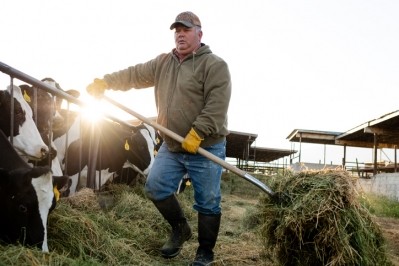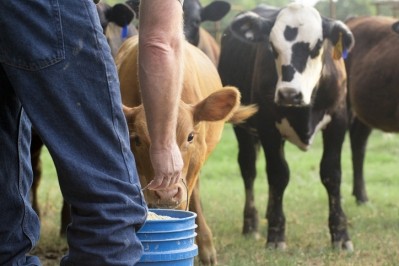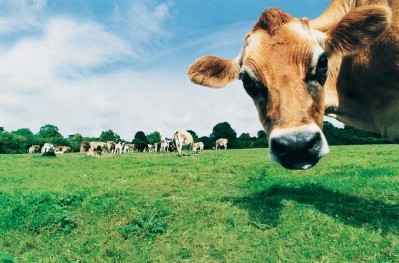Dispatches from One: The Alltech Idea's Conference
'Intangible benefits to be found in new dairy farming technology'
We spoke to Jeffrey Bewley, dairy housing and analytic specialist, Alltech, about the developing potential for technology use in dairy production at One: Alltech’s Ideas Conference in Lexington, Kentucky last month. He also presented on the topic at the event.
Such technology can be focused on labor-saving efforts, like mixing TMR or automated feeding, while others analyze cow health and behavior.
“There are massive opportunities sitting in front of us with technologies,” he said. “But we have to temper that with a dose of reality and realize that applying it isn’t always easy and it has to make economic sense.”
However, there are challenges that technology could help dairy producers, he said. “Long term, I think it’s disease detection, disease reduction, minimizing the effects of disease,” he added.
“All of those things, of course, end up improving efficiency, which reduces the environmental impact of the operation – all these things have a positive impact on animal welfare,” he said. “There are a lot of intangible benefits to these kinds of technologies.”
Tech uses and challenges
The cost-effectiveness of technology can be one of the challenges, said Bewley.
Although there has been development in work on automated feeding systems – moving from models that provided a concentrate to systems that generate a total mixed ration (TMR), adoption has been slow, especially in the US, he said.
“It’s been adopted at a greater level in Europe, [and] I think we’ll see more of that moving forward.
“One of the things that drives a lot of the technology adoption is the availability or cost of labor,” he said. “In the US, compared to other parts of the world, we’ve have [become] spoiled [in terms of] the availability of relatively inexpensive sources of labor – that’s changing – and as labor costs go up the demand for automation will also go up.”
Some tools, like equipment used to generate a TMR, also may be better suited to certain sizes of production facilities, he said. “That type of system might work better for a 200-cow dairy than a 2,000-cow dairy that’s why some of the adoption wouldn’t be as high,” he added.
One technology that has gained more interest has been the spread of automatic calf feeders as they allow calves to have more frequent meals, Bewley said.
Sensor technologies have also been more widely accepted, he said. Some of the most common uses for wearable sensor technology have been to track heat cycles and the time a cow spends eating and ruminating.
Measuring rumination and the time a cow spends eating provides data on the metabolic health of the herd and the cow, he said.
“We can identify this animal is not eating then that gives us an opportunity to go in and intervene and help that animal hopefully sooner than what we would be able to if we didn’t have that monitoring technology.”
“Ultimately, whatever technology we’re talking about, there has to be a good return on investment. That also hinges a little on where the farm started – if they were already doing a good job with reproductive management, then the economic advantage of adopting a technology isn’t as high.”
In addition to wearable sensors, some technologies are being developed to assess milk components or use image analysis to track multiple cows, said Bewley.
Establishing a way to measure milk components could be a way to record data like somatic cell count and milk fat, which have been tracked to years, he said. However, it could also allow producers a way of tracknig progesterone or beta-hydroxybutyrate (BHB) levels, which relate to fertility and cow health, respectively.
Image analysis technology may provide a way to record information like cow’s body condition score and the herd’s nutritional status, he said. “The idea with the technology is that it lets us identify it faster, so we deal with it sooner,” he added.
Non-wearable sensors could deliver an economy of scale as they can track multiple animals rather than one, he said.
However, one of the difficulties in working with sensor technology is having the knowledge to correctly interpret the data, Bewley said. “You still need those kinds of people who can use that sort of ‘cow-sense.’”
Adoption of new technology
As new technology is developed, or products are improved, it may be Europe or Canada that lead the adoption, said Bewley.
“They have a different economic system,” he said. “We’re going to trail in some regards – unless in some scenarios where we see clear economies of scale.”
The economic situation must be considered as a factor of technology adoption, he added. However, a reduction in the availability of labor in the US also could spur technology use.
“The other thing that comes into play is a lot of these technologies have come out in the last 5 to 10 years, and if you look at the last 5 to 10 years, in terms of milk price, they’ve not been having a very good time,” Bewley said regarding the US dairy sector. “Even if people were interested or thought they could justify the internal investment, it just is simply the matter of not having the [ability].”














